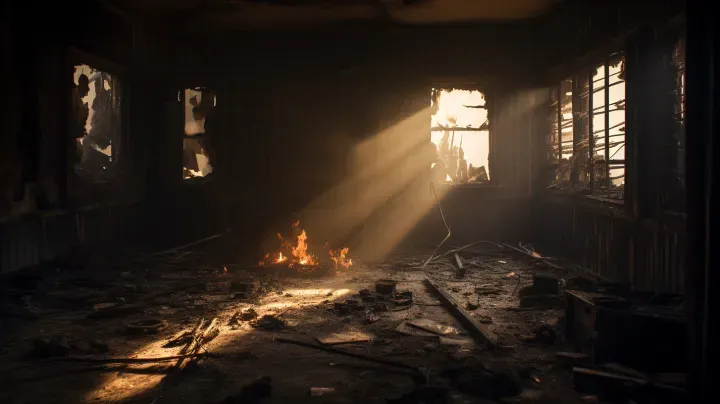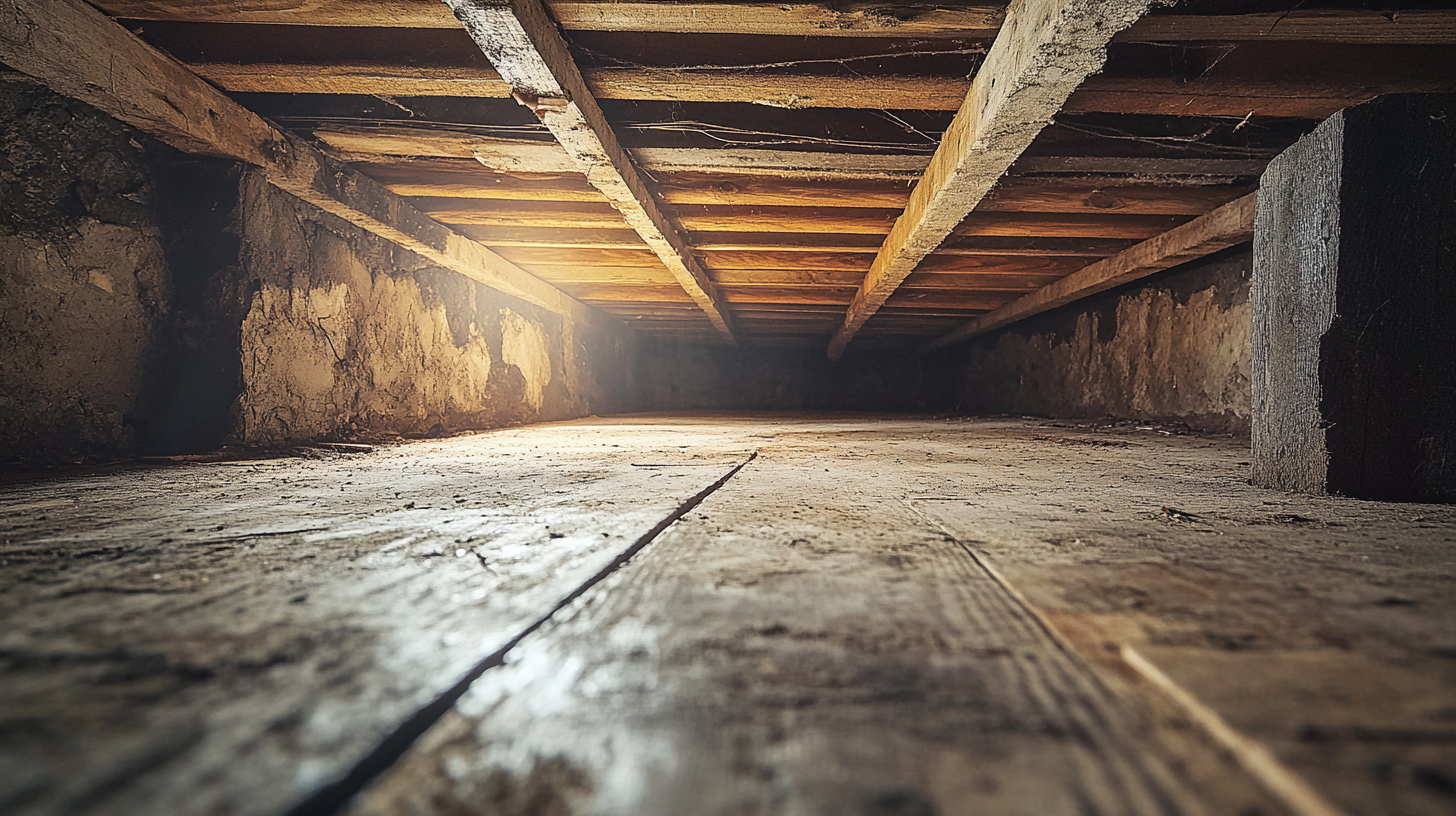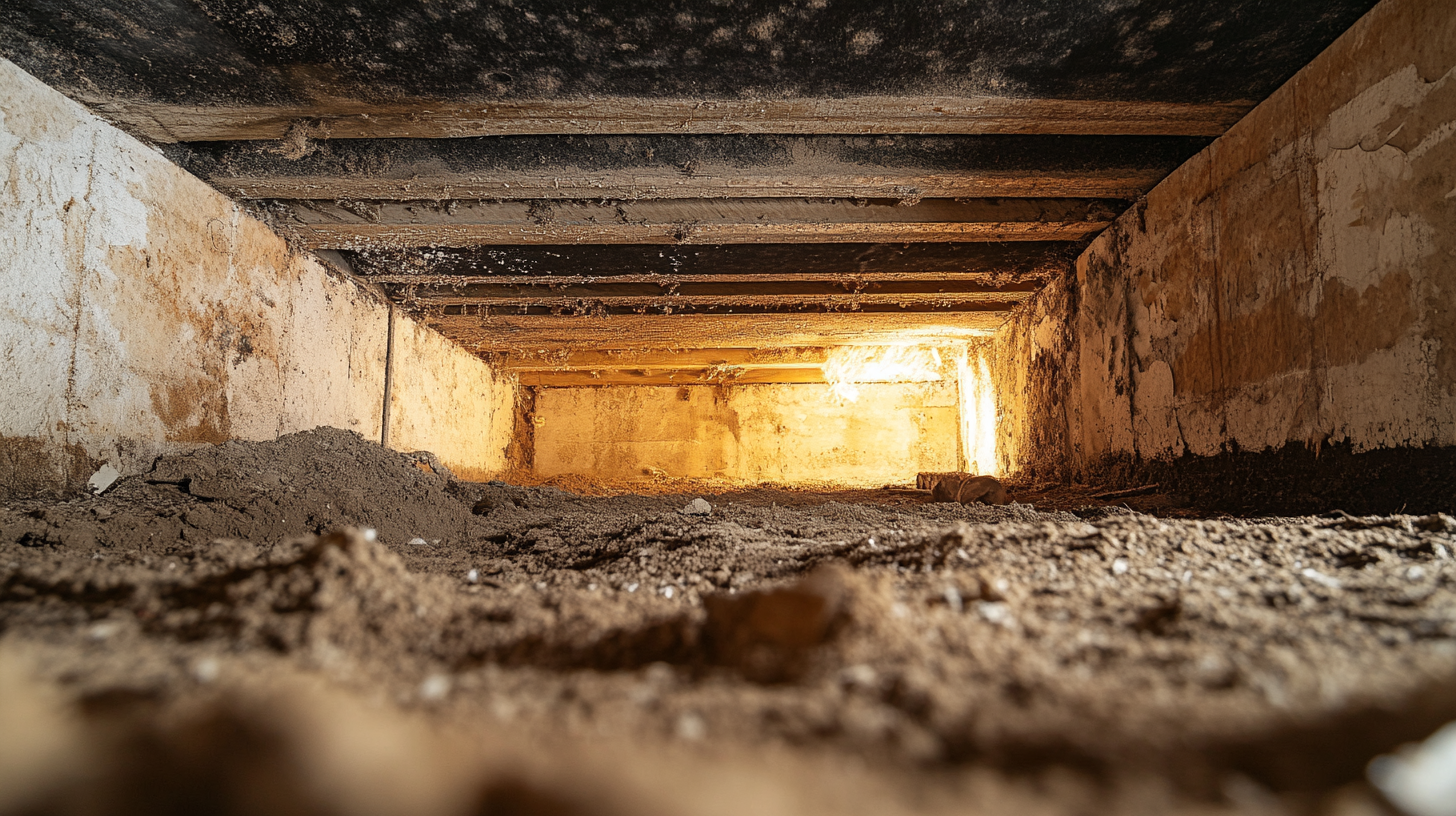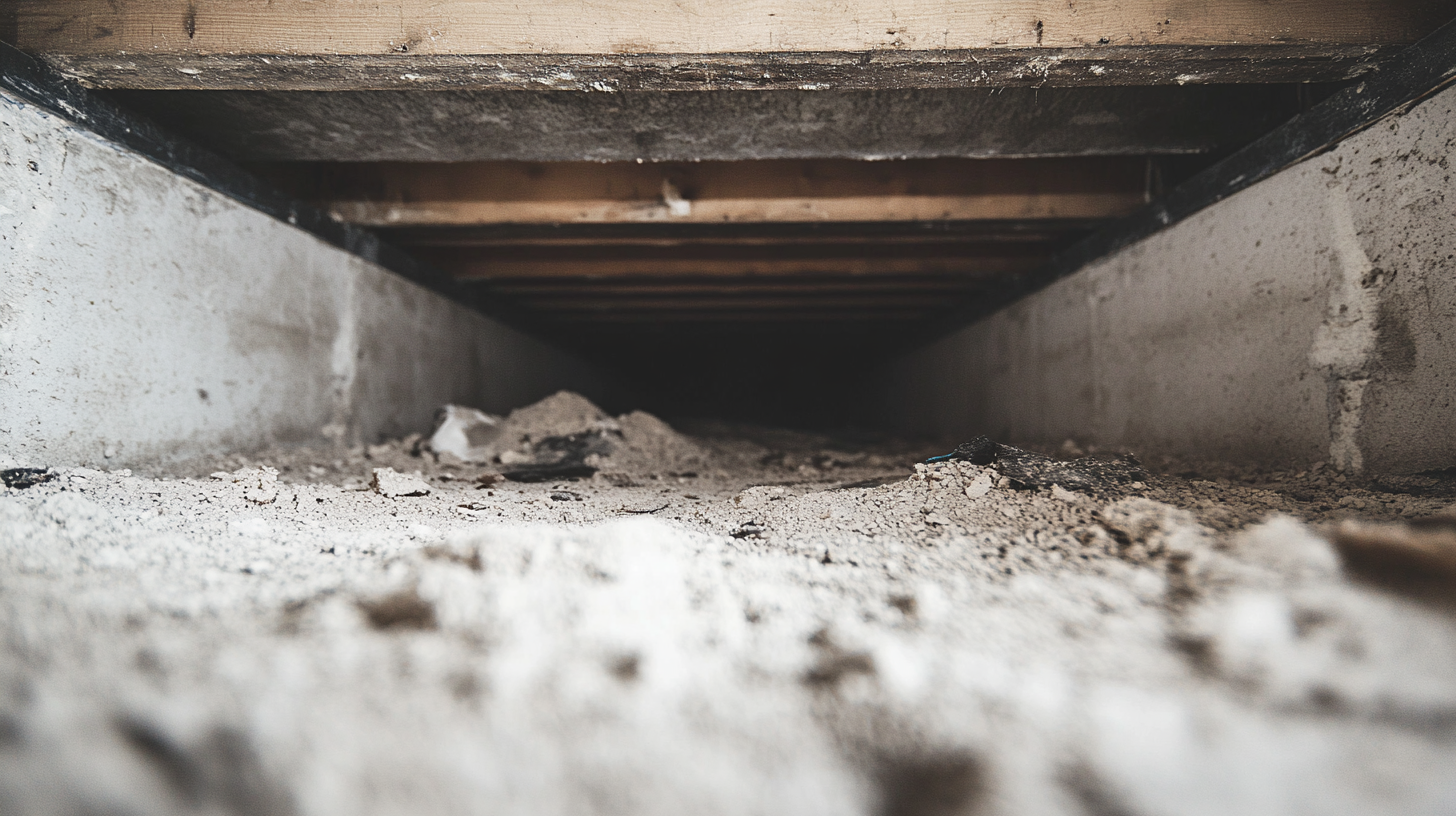Smoke Damage in Commercial Buildings

In the dynamic environment of commercial spaces, smoke damage can arise from various sources and bring with it a host of challenges. This blog aims to explore the common causes and impacts of smoke damage in commercial settings, underscoring the critical importance of a swift and effective response to minimize business disruption and ensure the safety of employees and customers.
Smoke damage in commercial spaces is not just a matter of physical repair; it's a multifaceted issue that can affect everything from operational continuity to health and safety standards. Common causes range from accidental fires in kitchens or storage areas to electrical faults and even incidents in nearby premises. The impact of such events extends beyond visible soot or charred surfaces; it permeates through the air quality, structural integrity, and even the morale of those who frequent the space.
The presence of smoke can disrupt business operations, leading to financial losses and reputational damage. It can also pose significant health risks, particularly in environments like restaurants, hotels, or office buildings, where air quality is paramount. Moreover, in commercial settings, the responsibility to address these issues promptly and effectively is not just operational but also legal, ensuring compliance with health and safety regulations.
In this blog, we will delve into the various causes of smoke damage in commercial environments, from the most common to the least expected. We will examine the immediate and long-term impacts of such incidents, highlighting the need for comprehensive planning and response strategies. From initial assessment to the final stages of restoration, our focus will be on actionable steps businesses can take to efficiently manage smoke damage, reduce downtime, and maintain a safe, welcoming environment for all.
Join us as we navigate the complexities of smoke damage in commercial settings, offering insights and guidance to help businesses effectively respond to and recover from these challenging incidents.
Understanding Smoke Damage in Commercial Buildings
Smoke damage in commercial buildings can be a complex issue, varying in type and severity. It's crucial for business owners and facility managers to understand the different types of smoke damage and how to assess their extent to effectively address and remediate the issue. This section explores the various types of smoke damage and provides guidelines for assessing its severity and scope.
Types of Smoke Damage
Smoke damage can manifest in different forms, each with its own characteristics and challenges. Understanding these types is essential for effective cleanup and restoration:
- Wet Smoke Damage: Often results from low-heat, smoldering fires with a high moisture content. Wet smoke produces a sticky, smeary residue that is pungent and more challenging to clean. It commonly arises from plastic and rubber burning.
- Dry Smoke Damage: Caused by high-temperature fires that burn quickly, such as wood or paper fires. Dry smoke is fine and powdery, making it easier to clean from surfaces but more likely to infiltrate cracks and porous materials.
- Protein Smoke Damage: Occurs from the evaporation of material rather than from a fire. It's common in kitchen fires and leaves a virtually invisible residue that discolors paints and varnishes and has a strong, unpleasant odor.
Assessing the Extent of Damage
Evaluating the severity and scope of smoke damage in a commercial environment is key to planning the restoration process:
- Visual Inspection: Conduct a thorough walkthrough to visually assess the areas affected by smoke. Look for visible soot, discoloration, and signs of residue on walls, ceilings, and fixtures.
- Odor Assessment: Smoke odors can permeate building materials and HVAC systems, indicating the extent of damage. Persistent odors may require more extensive remediation efforts.
- Professional Consultation: For a comprehensive assessment, consider hiring a professional restoration company. They can provide a detailed evaluation using specialized tools to detect hidden smoke damage.
- Documenting Damage: Keep a record of all affected areas and items. This documentation is crucial for insurance claims and for planning the restoration process.
Understanding the types of smoke damage and accurately assessing its extent are critical first steps in the process of restoring a commercial building. This knowledge guides the selection of appropriate cleaning methods and restoration techniques, ensuring a return to a safe and functional commercial environment.
Immediate Response and Safety Measures
In the aftermath of a smoke damage incident in a commercial setting, immediate response and safety measures are crucial to minimize further damage and ensure the safety of employees and customers. This section outlines the initial steps to take following a smoke damage incident, safety precautions, and measures to secure the building.
Emergency Procedures and Safety
Quick and effective action is essential in the immediate aftermath of smoke damage. Here are the initial steps and safety precautions to consider:
Initial Steps to Take Immediately Following a Smoke Damage Incident:
- Evacuate the building promptly and ensure that all employees and customers are accounted for.
- Contact emergency services if necessary and report the incident to the appropriate authorities.
- Notify your insurance company to start the claims process.
Safety Precautions for Employees and Customers:
- Keep a safe distance from the affected building until professionals declare it safe to re-enter.
- Provide employees and customers with information about potential health risks and safety measures.
- Offer support and assistance to those who may be affected by the incident, such as medical attention for those with smoke inhalation.
Securing the Building
Securing the building after a smoke damage incident is essential to prevent unauthorized access and further damage. Here are measures to consider:
Measures to Secure the Building and Prevent Unauthorized Access:
- Install temporary security measures such as fencing or barricades to restrict access to the damaged area.
- If windows or doors are damaged, board them up to prevent unauthorized entry and protect against weather elements.
- Consider hiring security personnel to monitor the site, especially if valuable items are exposed due to the damage.
- Coordinate with fire and safety officials to determine when it is safe to enter the building for further assessment and cleanup.
Immediate response and safety measures following a smoke damage incident are critical in managing the situation effectively. These steps not only ensure the safety and well-being of everyone involved but also help in laying the groundwork for the subsequent restoration and recovery process.
Cleaning and Restoration Process
Dealing with the aftermath of smoke damage requires a comprehensive approach, whether you opt for professional services or decide to undertake the task in-house. This section introduces the services offered by professional smoke damage restoration companies and provides guidance on DIY cleaning approaches, including safe and effective techniques and materials.
Professional Cleanup Services
Professional smoke damage restoration companies offer a range of services designed to thoroughly clean and restore affected areas. Here’s an introduction to what they provide:
Services Offered by Professional Smoke Damage Restoration Companies:
- Assessment and Inspection: Experts assess the extent of smoke damage and develop a restoration plan.
- Soot and Smoke Removal: Specialized equipment and techniques are used to remove soot and smoke residue from surfaces, including walls, ceilings, and floors.
- Odor Elimination: Advanced methods like thermal fogging and ozone treatment are employed to neutralize and remove smoke odors.
- Structural Cleaning: This includes cleaning of structural elements like beams and framing, as well as HVAC systems to prevent the spread of smoke particles.
- Content Restoration: Professionals can clean and restore items affected by smoke, such as furniture, electronics, and personal belongings.
DIY Cleaning Approaches
In some cases, handling smoke damage cleaning in-house can be feasible. Here are guidelines on when and how to do it, along with safe and effective cleaning techniques:
When and How to Undertake Cleaning Efforts In-House:
- Consider DIY methods for minor smoke damage where professional help may not be necessary.
- Ensure proper ventilation in the area before starting the cleaning process.
Safe and Effective Cleaning Techniques and Materials:
- Dry Sponging: Use a dry cleaning sponge to gently remove soot from surfaces.
- Mild Detergents: For washable surfaces, use mild detergents mixed with water. Avoid harsh chemicals that can exacerbate damage.
- Baking Soda and Vinegar: These natural products can be effective in removing odors and light soot.
- Protective Gear: Wear gloves, masks, and protective eyewear to safeguard against inhaling soot particles or coming into contact with harmful substances.
- Disposal: Properly dispose of soot-contaminated materials like rags and sponges to prevent spreading the residue.
Whether opting for professional services or undertaking DIY cleaning, understanding the scope and nature of smoke damage is crucial. This knowledge guides the selection of appropriate cleaning methods and ensures the restoration process is both effective and safe.
Special Considerations for Different Areas
Smoke damage in commercial environments can present unique challenges depending on the area affected. From office spaces to warehouses, each setting requires a tailored approach to cleaning and restoration. This section explores the specific challenges and solutions for cleaning office spaces, as well as handling smoke damage in warehouses and storage areas.
Office Spaces and Work Areas
Office spaces and work areas are often filled with electronics, paperwork, and furniture, each requiring careful consideration during the cleaning process. Here are specific challenges and solutions:
- Specific Challenges and Solutions for Cleaning Office Spaces:
- Electronics and Equipment: Use dry methods, like compressed air, to remove soot from sensitive electronics. Consult professionals for thorough cleaning of heavily damaged equipment.
- Paper Documents: Gently remove soot from documents using dry sponges or soft brushes. Consider digitizing important documents to prevent further damage.
- Furniture and Upholstery: Vacuum upholstery with a HEPA filter vacuum. For deep cleaning, use appropriate upholstery cleaners or hire professional services.
- Air Quality: Ensure proper ventilation and consider air purifiers to remove airborne particles and improve air quality.
Warehouses and Storage Areas
Warehouses and storage areas present their own set of challenges due to their size and the variety of stored goods. Here are key considerations:
- Handling Smoke Damage in Large Storage Areas and Warehouses:
- Assessing Inventory: Evaluate the extent of damage to stored goods. Some items may need to be discarded if they are heavily soot-damaged or contaminated.
- Structural Cleaning: Clean structural elements like shelving and ceilings. In large spaces, this might require industrial-grade equipment.
- Ventilation: Large areas require effective ventilation strategies to remove smoke odor and particles. Use industrial fans and air movers.
- Safety: Ensure structural integrity, especially if the warehouse has experienced fire damage. Engage structural engineers for a thorough assessment.
In commercial settings, addressing smoke damage requires a strategic approach tailored to the specific needs of each area. Understanding these unique challenges and implementing the appropriate solutions are key to effectively restoring the environment to its pre-damage state.
Preventive Measures and Future Planning
Preventing smoke damage in commercial settings involves proactive measures and thorough planning. Implementing fire prevention strategies and having a robust emergency response plan are crucial steps in safeguarding properties and ensuring the safety of occupants. This section discusses key practices in fire safety and the importance of emergency preparedness.
Implementing Fire Prevention Strategies
Effective fire prevention strategies can significantly reduce the risk of incidents leading to smoke damage. Here are essential practices:
Fire Safety Practices to Reduce the Risk of Future Incidents:
- Regular Fire Safety Audits: Conduct regular inspections of your premises to identify and mitigate potential fire hazards.
- Maintenance of Fire Safety Equipment: Ensure that all fire extinguishers, sprinklers, and alarms are in working order and accessible.
- Safe Electrical Practices: Regularly inspect electrical systems and appliances for faults and avoid overloading circuits.
- Employee Training: Train staff in fire safety procedures, including the use of fire extinguishers and evacuation protocols.
- Proper Storage of Flammable Materials: Store flammable materials safely and away from potential sources of ignition.
Emergency Preparedness and Response Planning
Having a well-developed emergency response plan is vital for quick and effective action in the event of a fire. Here’s why it’s important:
Importance of Having a Robust Emergency Response Plan in Place:
- Quick Response to Emergencies: A clear plan enables a swift response to fire incidents, potentially reducing damage and ensuring occupant safety.
- Clear Evacuation Procedures: Well-defined evacuation routes and procedures help prevent panic and ensure everyone can exit the building safely.
- Post-Incident Action: The plan should include steps for post-incident action, such as contacting emergency services, securing the site, and beginning the restoration process.
- Regular Drills and Updates: Conduct regular emergency drills to ensure everyone is familiar with the plan. Update the plan as necessary to address new risks or changes in the building layout.
Implementing fire prevention strategies and having a robust emergency response plan are key components of a comprehensive approach to reducing the risk of smoke damage and ensuring quick recovery in the event of an incident. These measures not only protect physical assets but also prioritize the safety and well-being of individuals in commercial environments.
FAQs
Contact Fast Response Cleaning & Restoration Today!
Fast Response Cleaning & Restoration will do everything we can to ensure your experience with us is excellent.
Request A FREE Estimate
Request A FREE Estimate Form
CHECKOUT RECENT POST



Have an Emergency? We're Here to Help!
When it comes to disaster cleanup, we are a seasoned veteran in the industry and have helped hundreds of property owners just like you.
Our disaster recovery teams are available 24-7 to quickly clean up and repair disasters of all types.
